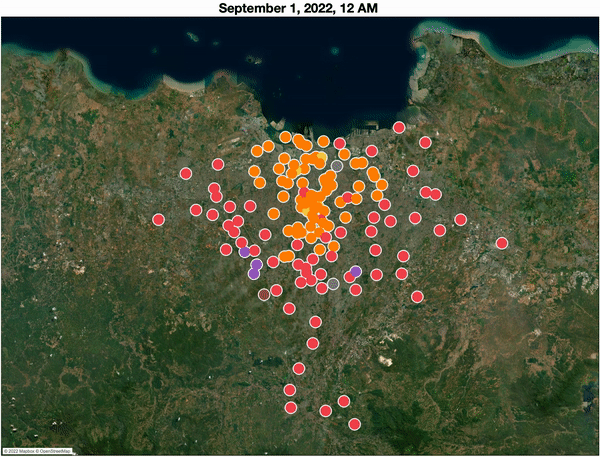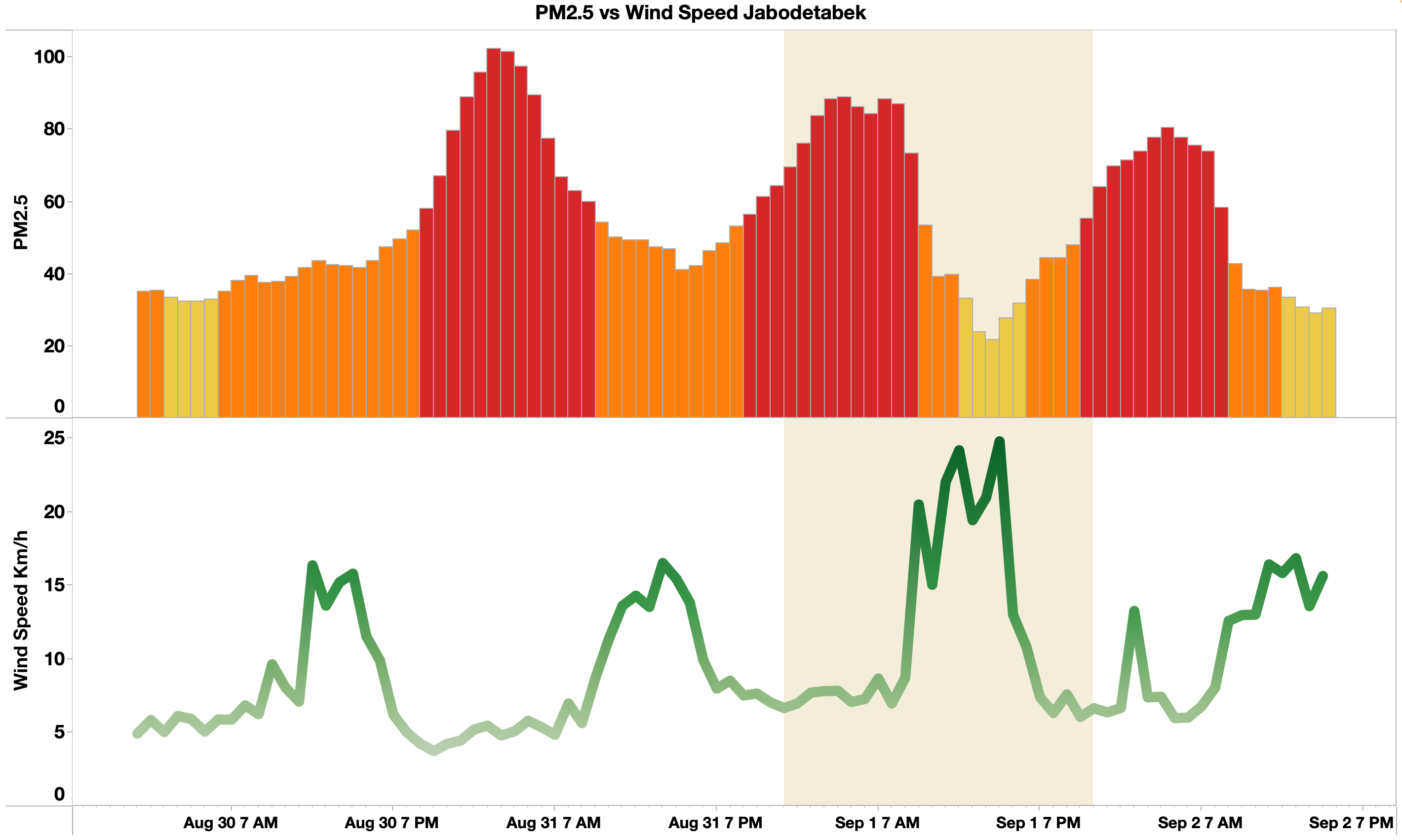Can sea breeze help the air quality improvement?
Healthy air quality is difficult to find these days, and Jakarta is no exception. PM2.5 pollution, one of the air pollutants we face today, is increasing due to massive economic activity. Because of its tiny size, PM2.5 is dispersed all around us, carrying toxic substances on its surface that can poison our bodies if we breathe them in or penetrate our air sacs.
As a temporally and spatially changing aspect, Jakarta's air quality will not always be bad. This is due to the dispersion process of PM2.5 pollution, which is influenced by meteorological factors, including wind.
What is wind?
Wind is the air that travels from an area of high pressure to an area of lower pressure. The wind is classified into two types: local winds and seasonal winds. Local winds blow only in certain areas and at certain times, whereas seasonal winds blow continuously and regularly.
Local wind direction and speed play a role in pollutant dispersion
Now let’s focus on the local wind!
Generally, local winds are subdivided into several winds, such as sea breezes and land breezes. Sea breezes are winds that move from the ocean to the land due to the difference in temperature at the sea surface, which is cooler than the temperature on land. As one of the meteorological factors, wind has a major influence on the spread of PM2.5.
Daytime sea breezes can carry pollutants from the sea to the land, while nighttime land breezes can carry pollutants from the land to the sea. The direction and speed of these winds affect the dispersion of pollutants. Wind can transport pollution far from its source, even across countries.
A study also observed that when the wind speed is lower than 9 km/h, PM2.5 levels in a location increase. The higher the wind speed, the lower the levels of pollutants as they fly with the wind.
Sea breeze influences the movement of PM2.5 in Jabodetabek
If you look at the events of early September 2022, there was a movement of PM2.5 from the north in Jakarta. At that time, the wind push from the sea (from the north) helped improve air quality in Jakarta by driving PM2.5 pollution towards the south.

This event also occurred between 9 AM and 5 PM. It can be seen that the level of PM2.5 pollution is very low during the highest wind speeds.

Let's take a look at Jakarta, which is marked with a green dot below!
If you look at the wind direction, you will notice that it moves from the north (from the sea) to the south. This sea breeze, with a speed of 24 km/h, was able to reduce air pollution in Jabodetabek in early September 2022.
Why it's crucial to check the air quality before starting outdoor activities
We now understand that sea breezes contribute to changes in air quality. Even though conditions shift and air pollution persists, we can still predict it using wind direction and speed. As a result, forecasting air quality is simpler. To safeguard our bodies from exposure to air pollution, regular air quality monitoring is also advisable.
Nafas has installed more than 180 air quality monitoring sensors in several cities in Indonesia. Through the nafas app, you can find out the air quality in your location in real-time, complete with predictions for the next 24 hours. You can also find a summary of air quality data in your location for the last 7 days through nafas Insights.
Interested in hosting a sensor in your city? You can register yourself here.